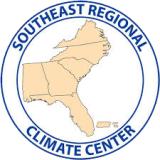Southeast Climate Monthly Webinar: May 28, 2024
The Southeast region largely experienced above-average temperatures over the past month, with several locations on track to record one of their hottest spring seasons on record. Drought is largely absent, except in the Florida peninsula. As we transition into the summer, the region as a whole can expect to continue experiencing wet and hot conditions, with normal risk of flooding.
Check out the recording below to hear more on Southeast climate conditions and a special presentation, "Developing Heat Early Warning Systems to Protect Public Health in Warm and Humid Conditions” from Dr. Pablo A. Méndez Lázaro of the University of Puerto Rico. For more information, please contact Meredith Muth (meredith.f.muth@noaa.gov).
About This Webinar
The Southeast Climate monthly webinar series is hosted by the Southeast Regional Climate Center, the National Integrated Drought Information System (NIDIS), and the NOAA National Weather Service. These webinars provide the region with timely information on current and developing climate conditions such as drought, floods, and tropical storms, as well as climatic events like El Niño and La Niña. Speakers may also discuss the impacts of these conditions on topics such as agriculture production, water resources, wildfires, and ecosystems







